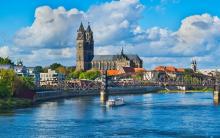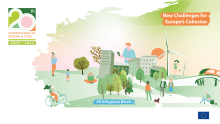Presentation of the Region
Saxony-Anhalt is the eight largest state in Germany and the eleventh largest state in terms of population.
Saxony-Anhalt has a total area of 20,454 square kilometres with a population of about 2.1 million inhabitants. The capital of Saxony-Anhalt is Magdeburg, a city steeped in tradition.
The landscape is very varied. The state extends from the Altmark in the north through the Magdeburg Börde and the Harz low mountain range right up to the Thuringian foothills. Two thirds of the area of Sachsen-Anhalt is agricultural land.
Saxony-Anhalt is a state with a rich history. A whole series of important events, people, and historical processes had their origins here and exerted their influence time and again far beyond the boundaries of the state.
The Reformation is just one case in point. The works of Martin Luther and Philipp Melanchthon, both of whom were professors at the university in Wittenberg, permanently changed the religious landscape of Germany.
RIS3 Priorities
The targeted expansion of the scientific location of Saxony-Anhalt, the professionalization of the knowledge and technology transfer and securing the supply of specialised workers are the guidelines of the Regional Innovation Strategy. As a result, the scientific system is a basis for making an effective contribution to increasing innovation in the state throughout the entire value added chain.
As part of the Regional Innovation Strategy, five leading and growth markets which are important for the state were identified on the basis of the core competences in the existing fields of science and economy in Sachsen-Anhalt and in view of the future global challenges. In these future markets, the state of Saxony-Anhalt wants to encourage intelligent and socially integrative growth over the coming years in order to create competitive and high-quality work places in the state.
The Lead Markets with future potential in Sachsen-Anhalt are:
> Energy, Engineering and Plant Construction,
Resource Efficiency
> Health and Medicine
> Mobility and Logistics
> Chemistry and Bioeconomy
> Food and Agriculture






